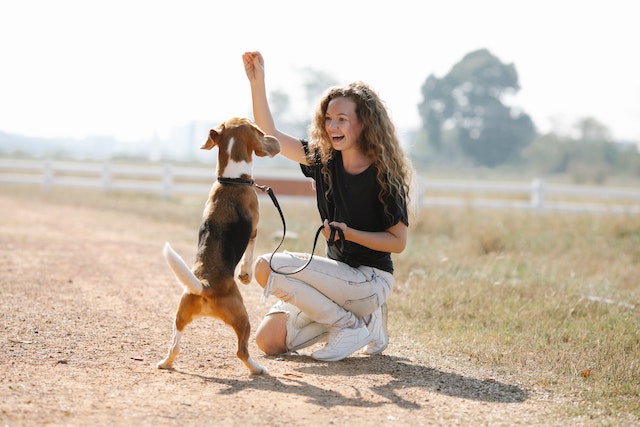The importance of obedience training in dogs cannot be overstated. Dogs have been trained and conditioned to excel at high-risk and difficult jobs ranging from explosive sniffing to herding cattle. While your pet dog at home may not need the training that will teach it to sniff out C-4 or herd vast flocks of sheep, dog training is necessary to teach it several basic skills. A well-trained family dog will know how to obey simple commands, respect its environment, and behave properly with other people and animals.
A well-trained pet dog gives you the comfort of knowing that your home is well-guarded and that your neighbors will never complain about your dog barking excessively, defecating in their yard, or snapping at them. A well-trained dog is not only a loyal friend and loving pet but also an asset to your household.
If you are planning on training your dog at home, there are some steps you need to be aware of before starting. First and foremost, start with the basics. For example, it would help if you learned to crawl before you can walk, and nowhere is this truer than in dog training.
Dogs are slow, methodical learners. You must be blessed with an exceptionally gifted dog to teach it multiple commands. You can only jump ahead and teach it more advanced commands after it has learned the basics. Start with the simplest commands like ‘sit,’ ‘stand,’ ‘stop,’ and ‘come’ before you move on to more challenging ones. Only progress to the next command until you are confident your dog has mastered the previous one. Jumping all over the place only aggravates you and confuses the poor beast.
It also helps to be mindful of your dog’s breed. Your dog’s genetic makeup plays a huge role in what sorts of skills it possesses. For example, some dogs are bred for fighting, others for hauling heavy loads, and others for tending cattle. So, depending on your dog’s breed, it may naturally excel at certain tasks.
Make sure your dog is comfortable during the training session. Dogs have notoriously short attention spans, and they will lose interest rather quickly. Please don’t get mad when this happens; learn to anticipate it and counteract it by engaging more with the animal or devising clever little obedience training games that will hold its interest for longer periods.
Regardless of your specific dog training method, remember always to give your dog enough praise and encouragement when it gets something right and not punish it when it does something wrong. Be sure to give it lots of love and attention when it does well, but be firm when it breaks the rules.
Ensure the area you conduct the dog training sessions is as distraction-free as possible. Your dog needs to be focused on you and not anywhere else. Once you are confident he has learned a new command or behavioral trait, test him in an area full of distractions. You must be sure your dog will respond to your commands when you take him out in public – full of distractions.
Finally, be sure to practice on a variety of surfaces. You must mimic real-world conditions as much as possible during dog training, including the ground surface where your dog learns all its new commands. Make sure your dog is comfortable following your commands on cement sidewalks, sand, grass-covered lawns, at home, among the furniture, etc.
Dog training can be draining on both owner and pet. Don’t over-exert your animal or yourself. Take it easy at first and pick up the pace as you see your animal learning more and more skills. Keep at it, and you will be more than pleased with the results.
